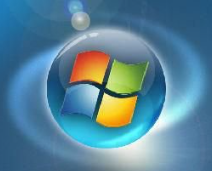2024年6月15日发(作者:)
windbg中文版使用方法
Windbg is a powerful debugging tool developed by
Microsoft. It is widely used by developers and system
administrators to analyze and troubleshoot software and
hardware issues. While the tool is primarily available in
English, there are resources and methods available to use
Windbg in Chinese as well.
To use Windbg in Chinese, you first need to ensure that
you have the Chinese language pack installed on your system.
This will enable you to view and interact with Chinese
characters in the user interface. Once the language pack is
installed, you can change the language settings in Windbg
to Chinese.
To change the language settings in Windbg, you need to
modify the registry entries associated with the tool. Open
the Registry Editor by typing "regedit" in the Run dialog
box and navigate to the following key:
HKEY_CURRENT_USERSOFTWAREMicrosoftWindows
NTCurrentVersionAeDebug. In this key, you will find a
string value named "Debugger" which contains the path to
the Windbg executable. Edit this value and append the
command line argument "-z zh-CN" (without quotes) to set
the language to Chinese.
After making this change, restart Windbg and you should
see the user interface in Chinese. Now you can use Windbg
in the same way as you would in English, but with the
advantage of being able to understand and work with the
tool in your native language.
Using Windbg effectively requires a good understanding
of its features and capabilities. The tool provides a
command-line interface that allows you to load and analyze
crash dumps, attach to running processes, and debug kernel-
mode and user-mode code. It also supports various debugging
commands and extensions that can be used to inspect memory,
set breakpoints, examine registers, and more.
One important aspect of using Windbg is understanding
the debugging symbols. Symbols provide information about
the code being debugged, such as function names, variable
names, and line numbers. They are essential for
understanding the call stack and identifying the source of
issues. Windbg supports loading symbols from symbol servers,
which are repositories that store symbol files for various
software components. By configuring symbol server settings
in Windbg, you can ensure that the tool retrieves the
correct symbols for the code you are debugging.
Another useful feature of Windbg is its scripting
capabilities. You can write scripts in JavaScript or
WinDbg's own scripting language, which allow you to
automate repetitive tasks and perform complex analysis.
Scripts can be used to automate the loading of symbols, set
breakpoints, analyze memory, and generate reports. This can
greatly enhance your productivity and make it easier to
analyze and debug complex issues.
In addition to its core features, Windbg also supports
various extensions that provide additional functionality.
These extensions can be written by Microsoft or third-party
developers and can be used to extend the capabilities of
Windbg. Some popular extensions include the SOS extension
for debugging managed code, the PSSCOR extension for
debugging .NET applications, and the MEX extension for
debugging native applications. These extensions can be
loaded into Windbg using the ".load" command and provide
additional commands and functionality specific to the
target platform or programming language.
In conclusion, Windbg is a powerful debugging tool that
can be used in Chinese by modifying the language settings
in the registry. It provides a command-line interface,
supports debugging symbols, offers scripting capabilities,
and can be extended with various extensions. By
understanding and utilizing these features effectively,
developers and system administrators can effectively
analyze and troubleshoot software and hardware issues.


发布评论